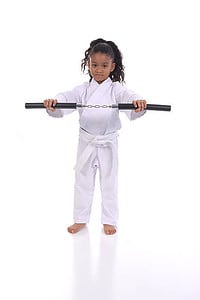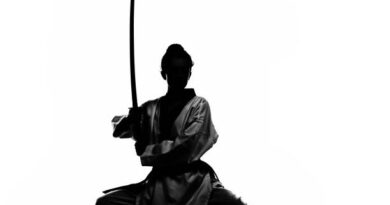Is there an age limit for starting martial arts?
The Benefits of Starting Martial Arts at Any Age
Martial arts are an excellent way to stay physically and mentally fit, regardless of age. Starting martial arts at any age can bring a variety of benefits, from improved physical health to increased self-confidence.
Physically, martial arts can help improve strength, flexibility, and balance. Martial arts involve a variety of movements that can help build muscle and increase flexibility. Additionally, martial arts can help improve balance and coordination, which can help reduce the risk of falls and injuries.
Mentally, martial arts can help improve focus and concentration. Martial arts require intense focus and concentration, which can help improve mental clarity and focus. Additionally, martial arts can help reduce stress and anxiety, as the physical activity can help release endorphins and reduce cortisol levels.
Martial arts can also help improve self-confidence. Martial arts involve learning new skills and techniques, which can help build self-confidence. Additionally, martial arts can help improve self-discipline, as it requires dedication and commitment to practice and improve.
Finally, martial arts can be a great way to make new friends. Martial arts classes are a great way to meet new people and make new friends. Additionally, martial arts can help foster a sense of community, as practitioners often support and encourage each other.
Overall, starting martial arts at any age can bring a variety of benefits, from improved physical health to increased self-confidence. Martial arts can be a great way to stay physically and mentally fit, regardless of age.
How to Find the Right Martial Arts Program for Your Age Group
Finding the right martial arts program for your age group can be a daunting task. With so many different styles and programs available, it can be difficult to know which one is best for you. However, by taking the time to research and understand the different types of martial arts, you can find the perfect program for your age group.
First, it is important to understand the different types of martial arts. There are many different styles, such as Karate, Taekwondo, Judo, Aikido, and Brazilian Jiu-Jitsu. Each style has its own unique techniques and philosophies, so it is important to research each one to determine which one is best for you.
Once you have narrowed down your choices, it is important to consider the age group of the program. Different martial arts programs are designed for different age groups, so it is important to find one that is appropriate for your age. For example, some programs may be more suitable for younger children, while others may be better suited for adults.
It is also important to consider the instructor of the program. The instructor should be experienced and knowledgeable in the style of martial arts they are teaching. They should also be able to provide a safe and supportive environment for students of all ages.
Finally, it is important to consider the cost of the program. Different programs may have different fees, so it is important to find one that fits within your budget.
By taking the time to research and understand the different types of martial arts, you can find the perfect program for your age group. With the right program, you can learn the skills and techniques necessary to become a successful martial artist.
Exploring the Different Martial Arts Styles for Different Age Groups
Martial arts are an excellent way for people of all ages to stay active and learn valuable self-defense skills. However, different martial arts styles are better suited for different age groups. This article will explore the various martial arts styles available and discuss which ones are best for different age groups.
For children, martial arts can be a great way to learn discipline and respect. Karate is a popular choice for children, as it focuses on self-defense and discipline. It also teaches children to be aware of their surroundings and to be respectful of others. Judo is another great option for children, as it focuses on throws and grappling techniques. It also teaches children to be aware of their opponents and to use their strength and agility to their advantage.

For teenagers, martial arts can be a great way to stay active and learn self-defense skills. Brazilian Jiu-Jitsu is a popular choice for teenagers, as it focuses on ground fighting and submission techniques. It also teaches teenagers to be aware of their opponents and to use their strength and agility to their advantage. Muay Thai is another great option for teenagers, as it focuses on striking and kicking techniques. It also teaches teenagers to be aware of their opponents and to use their strength and agility to their advantage.
For adults, martial arts can be a great way to stay active and learn self-defense skills. Mixed Martial Arts (MMA) is a popular choice for adults, as it combines various martial arts styles such as boxing, kickboxing, wrestling, and Brazilian Jiu-Jitsu. It also teaches adults to be aware of their opponents and to use their strength and agility to their advantage. Taekwondo is another great option for adults, as it focuses on striking and kicking techniques. It also teaches adults to be aware of their opponents and to use their strength and agility to their advantage.
In conclusion, martial arts can be a great way for people of all ages to stay active and learn valuable self-defense skills. Different martial arts styles are better suited for different age groups, so it is important to research the various martial arts styles available and choose the one that is best for you.
The Physical and Mental Benefits of Martial Arts for Older Adults
As people age, it is important to maintain physical and mental health. Martial arts can be an excellent way for older adults to stay active and healthy. Martial arts offer a variety of physical and mental benefits that can help older adults stay healthy and active.
Physically, martial arts can help older adults improve their balance, coordination, and flexibility. Martial arts involve a variety of movements that can help improve balance and coordination. The movements also help to increase flexibility, which can help reduce the risk of falls and injuries. Martial arts can also help to improve strength and endurance. The movements involved in martial arts can help to build muscle and increase cardiovascular endurance.

Mentally, martial arts can help to improve focus and concentration. The movements involved in martial arts require focus and concentration, which can help to improve mental clarity and focus. Martial arts can also help to reduce stress and anxiety. The physical activity involved in martial arts can help to reduce stress and anxiety levels, while the focus and concentration required can help to improve mental clarity and focus.
Overall, martial arts can be an excellent way for older adults to stay active and healthy. The physical and mental benefits of martial arts can help to improve balance, coordination, flexibility, strength, endurance, focus, and concentration. Martial arts can also help to reduce stress and anxiety levels. For these reasons, martial arts can be an excellent way for older adults to stay active and healthy.
How to Overcome the Challenges of Starting Martial Arts at an Older Age
Starting martial arts at an older age can be a daunting prospect, but it is far from impossible. With the right attitude and approach, anyone can learn martial arts regardless of their age. Here are some tips to help you overcome the challenges of starting martial arts at an older age.
1. Start Slow: It is important to start slowly and build up your strength and endurance gradually. Don’t try to do too much too soon, as this can lead to injury. Start with basic exercises and drills and gradually increase the intensity as you become more comfortable.
2. Focus on Technique: As an older student, it is important to focus on technique rather than strength or speed. Proper technique is essential for martial arts, and it is important to take the time to learn the correct form and movements.
3. Find a Good Instructor: Finding a good instructor is essential for any martial arts student, but it is especially important for older students. Look for an instructor who is patient and understanding, and who can help you progress at your own pace.
4. Set Realistic Goals: Setting realistic goals is important for any martial arts student, but it is especially important for older students. Don’t expect to become a black belt overnight, but instead focus on small, achievable goals that will help you progress steadily.
5. Have Fun: Above all else, remember to have fun. Martial arts can be a great way to stay active and healthy, and it can also be a great way to meet new people and make new friends. Don’t take it too seriously, and enjoy the journey.
Starting martial arts at an older age can be a challenge, but it is far from impossible. With the right attitude and approach, anyone can learn martial arts regardless of their age. By following these tips, you can overcome the challenges of starting martial arts at an older age and enjoy the journey.





